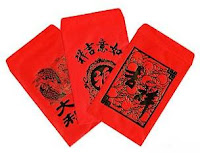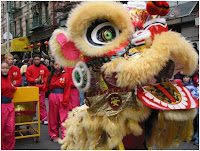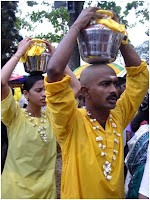Another unique point of Singapore, is that, it is made up of different races and religions.
To be ‘One people’, Singapore hence possesses Racial Harmony.
This harmony should not be taken for granted, however, which is why the Government often encourages this, and has put in effort for its maintenance.
Examples of the “effort” I am talking about are:
The Inter-Racial and Religious Confidence Circles (IRCCs)
The IRCCs aim to deepen people's understanding of the various faiths, beliefs and practices through inter-faith and inter-ethnic themed activities such as inter-faith heritage trails, inter-faith talks and dialogues and various ethnic and religious celebrations. The IRCCs are also primed to respond quickly to incidents with racial and religious tensions and to project solidarity on the ground during crises.
They serve as important bridges between religious, ethnic and community groups at the local level. Leaders from various religious, ethnic and other community organisations have come together to join the IRCC networks to build friendships and trust.
The Community Engagement Programme (CEP).
It seeks to strengthen the understanding and ties between people of different races and religions, and build up our society's skills and knowledge in coping with emergencies.
Through the Community Engagement Programme, the community will be involved in response plans that will be activated when a crisis, e.g. a terrorist incident, does occur. These plans aim to help Singaporeans cope with the shock and to stay calm and resilient. This will ensure that our society stays together, and we can continue with our daily lives as quickly as possible.
The Malay and Indian Activities Executive Committees (MAECs and IAECs).
It was formed by the PA (People’s Association) with the objectives of organising cultural, educational, social and sports activities for Malay and Indian community and promote Malay and Indian participation in community activities.
To encourage MAECs and IAECs to organise a wide variety of activities to promote harmonious relations between Malays/Indians and other communities, PA has also formed the PA MAEC Coordinating Committee (MESRA) and the PA IAEC Coordinating Committee (NARPANI) to oversee all MAECs and IAECs nationwide.
MAECs and IAECs work closely with other PA grassroots organisations in the constituencies and community centres to build a harmonious multi-racial society.
Team Singapore is about putting aside personal or organisational interests and working together as a team. It is about Singaporeans striving together for sporting excellence for the nation
At the heart of Team Singapore lies three core values – Fighting Spirit, National Pride and Teamwork – underscoring the notion that by working together, the whole can be greater than the sum of its parts.
Team Singapore gives Singaporeans the opportunity to foster closer relations and gather together to rally support for our athletes. Team Singapore shall be the means through which sports helps to build a cohesive and resilient Singapore.
Orange Ribbon Campaign.
Aims to strengthen the city state’s racial and religious harmony.
There is also a Racial Harmony that is celebrated annually on the 21st of July, the event commemorates the 1964 Racial Riots.
Racial Harmony Day also represents a day for schools to reflect on, and celebrate Singapore's success as a racially harmonious nation and society built on a rich diversity of culture and heritage. In schools all across the nation on that day, students are encouraged to be dressed in their traditional costumes such as the Cheongsam and the Baju Kurung. Traditional delicacies are also featured in the celebrations. Traditional games such as Kutih-kutih and zero point are played in schools, where inter-class competitions are sometimes organised.
They also recite a declaration on Religious Harmony.
This is the MOE Racial Harmony logo. It is in the shape of a heart, representing both the brotherhood of Singaporeans and the deep emotional, visceral bond that we all share. Red is also the colour of passion and energy, representing how we as a country are moving forward and boldly embracing our challenges and future.
This heart is also made up of four people, all joined together in a joyous embrace in a collective dance as they live in harmony. Where they have joined hands, there is a wonderful coming together of energy and efforts, and the yellow represents a bright light shining forth that illuminates our way and progress forward into the future.
Being made up of several races, Singapore hence celebrates many different festivals. This includes:
The Chinese New Year or Hua Ren Xin Nian falls in the months of January and February. Also known as Lunar New Year, it lasts 15 days and ends with the Lantern Festival or Yuan Xiao Jie.
Weeks before the New Year, old things are discarded and the house is spring cleaned. Hair is cut and all debts are repaid before New Year’s Day. Red and gold are auspicious colours for the Chinese and so paper decorations in these two colours are hung around the house.
The family reunion dinner is the most important custom observed and is held on New Year’s Eve. Foods served have special significance and ensure family harmony and peace throughout the year. Special food served includes yu sheng or raw fish salad and nian gao or sticky sweet rice pudding.
On New Year’s Day, one can hear loud beating of gongs and cymbals accompanied by lion dances. Children and singles receive hong baos or red packets of money from parents and married relatives. Mandarin oranges are presented to hosts in twos to signify double happiness or prosperity. The Chinese wish each other Gong Xi Fa Cai or “Happy and Prosperous New Year” on this special day.
To welcome the New Year and to expect prosperity and good fortune throughout the year, there are many taboos to be avoided during the New Year period. For example, one must not sweep the house; otherwise, prosperity and good luck will be swept away.
Hari Raya Haji, or the “pilgrimage festival”, marks the end of the Muslim’s pilgrimage to the holy city of Mecca in Saudi Arabia. It is also known as the Festival of Sacrifice, which commemorates Prophet Ibrahim’s test of obedience in sacrificing his son, Ismail. Hari Raya Haji is the Malay term for Aidil Adha.
Ramadan, the Muslim month of fasting and giving alms, falls on the ninth month of the Islamic calendar. This is also the month when Prophet Muhammad received the first words of the Holy Quran. During this period, Muslims practise self-discipline, show gratitude for blessings received and reflect on all their past deeds.
Two of the Five Pillars of Islam, fasting and Zakat or gift of money to charity, are practised during Ramadan. Muslims, except the very young and sick, abstain from food and drink from daybreak till sunset. Zakat-ul-Fitr or the payment for breaking fast is collected from every family and given to charity.
At the end of the fasting month, when the new moon is sighted, Muslims celebrate the festival of Hari Raya Puasa or Aidilfitri. Prayers are held in the mosque in the morning, after which families gather at their homes for a grand feast. Youngsters seek forgiveness and blessings from their parents on this day too.
Thaipusam is a Hindu festival celebrated in January or February annually. Thaipusam is actually derived from "thai" which means "10th", and "pusam" meaning "when the moon is at its brightest". It is thus celebrated when the moon is full in the Tamil month of Thai (between January and February).
This Hindu festival commemorates the feats of the Hindu God, Lord Subramaniam, son of Lord Siva. It also acknowledges Subramaniam's triumph over the evil forces. Hence, some who have made vows and pledges to Lord Subramaniam prove their gratitude to him by undergoing self-mortification on Thaipusam day.
The most popular form of sacrifice is the carrying of the kavadi, which means, "sacrifice at every step". The symbolism of carrying the kavadi originates from a myth where the kavadi represents a mountain with Lord Subramaniam at its apex. The smaller, semi-circular kavadi is a steel or wooden frame with bars for support on the shoulders, normally decorated with flowers and peacock feathers. The larger ones with spikes can weigh as much as 40 kg and reach a height of four metres. Other forms of sacrifice include piercing silver pins through the cheek and tongue and pricking the body with hooks and spear-like needles. The devotees who intend to perform the sacrifice are customarily required to observe strict physical and mental discipline. Throughout the 10th month of Thai, purification of the body is a necessity. This includes taking just one vegetarian meal a day, and sexual abstinence. In addition, a 24-hour fast is observed on the eve of Thaipusam. Most women devotees carry a pot of milk called a palkuddam. The milk is poured over the statue of Lord Subramaniam after the procession.
In Singapore, this Hindu festival starts at the Sri Srinivasa Perumal Temple at Serangoon Road. The kavadi carriers, together with their relatives, friends and well-wishers congregate here in the morning to participate in the procession which will take them through Serangoon Road, Orchard Road and finally to the Sri Thendayuthapani Temple, commonly known as the Murugan Temple at Tank Road or Chettiar's Temple. All along the way, devotees chant hymns in praise of the deity. The kavadi carriers' arrival at the Murugan Temple at Tank Road marks the accomplishment of their task. A mixture of fruits and honey is prepared and distributed among the devotees.
Al Hijrah or the Muslim New Year commemorates the flight of Prophet Muhammad from Mecca to Medina.
Hijrah or the migration which took place on 2 July 622 A.D. became the first day in the Islamic calendar. Each year, the Islamic New Year falls on different days since the Islamic calendar is based on the moon cycle and it is eleven days shorter than the Western calendar. On this day, Muslims attend special prayers, recite Quranic verses and share stories about Prophet Muhammad’s migration.
During the Mid-Autumn Festival, mooncakes and other goodies are offered to deities and ancestors at the family altar. Youngsters present mooncakes to their elders as a mark of respect. On this night, many houses are illuminated with lanterns. Family members gather to view the full moon and eat mooncakes while children carry colourful lighted lanterns. This is also an auspicious day for Chinese weddings.
Due to the number of ethnic groups in Singapore, there are, also, numerous religions.
Examples of these are Buddhism, Christianity, Hinduism, Islam and Taoism.
Being a Multi-racial and Multi-religious country makes Singapore unique.
But, of course, there are many other aspects too!




















































